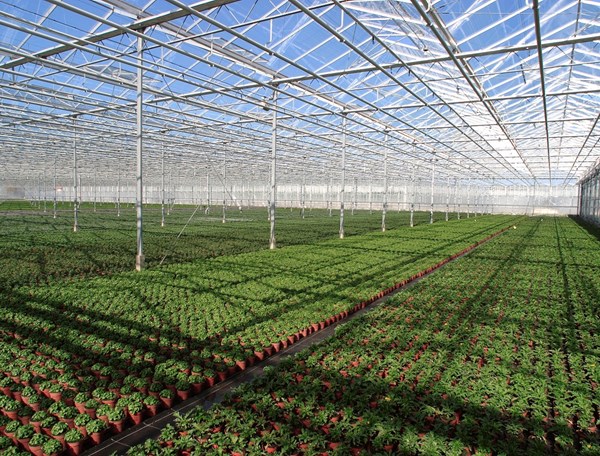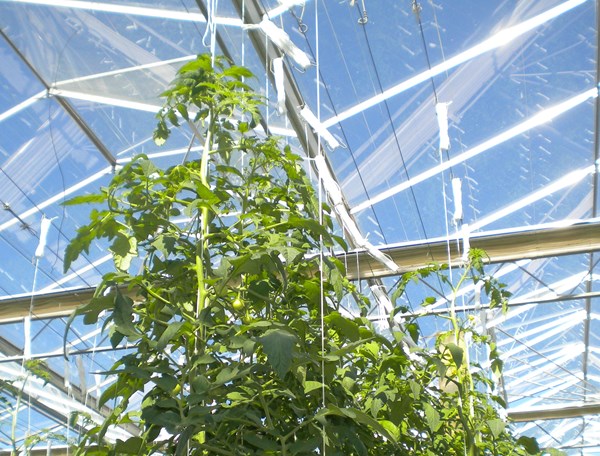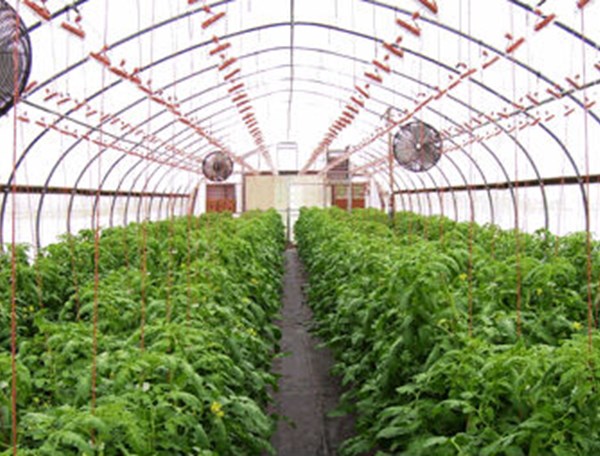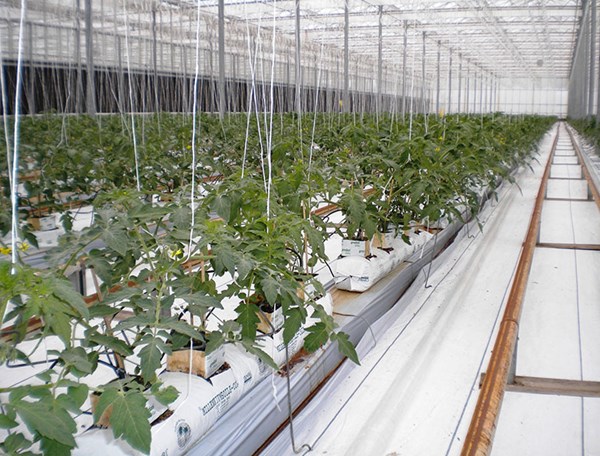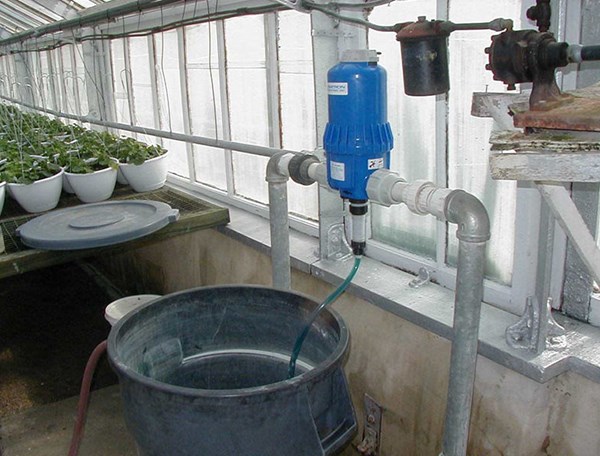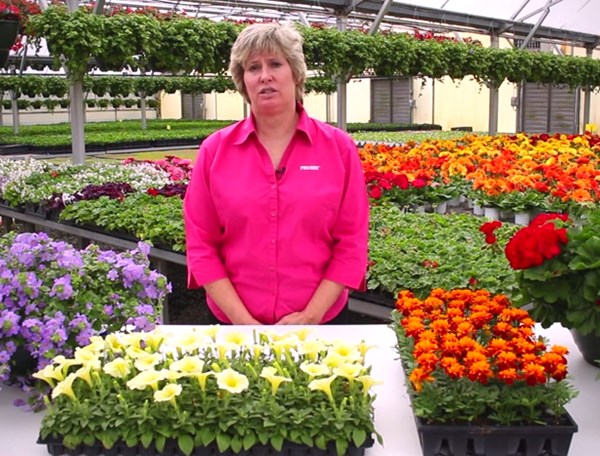Training Center
Ideal Fertilization for Greenhouse Vegetables and Herbs
Thursday, September 7, 2023 | Troy Buechel
PDF version of this text: Ideal Fertilization for Greenhouse Vegetables and Herbs
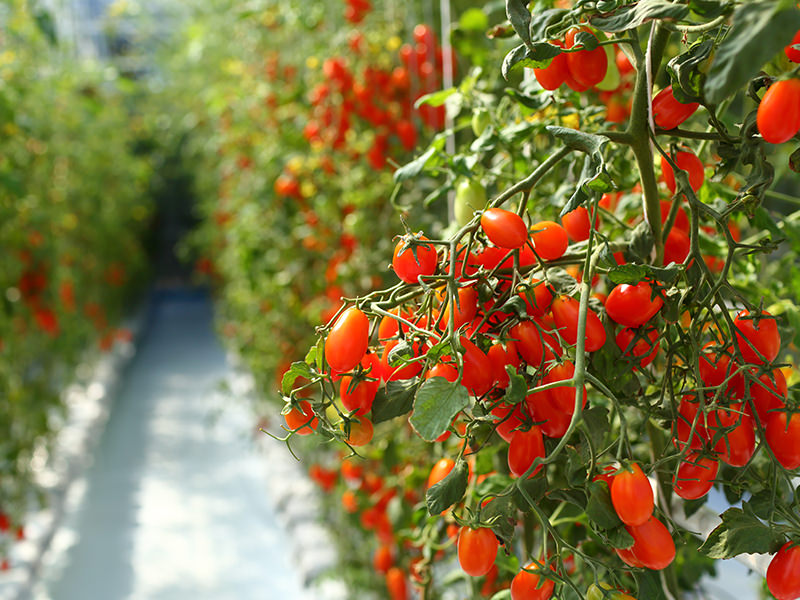
Vegetables and herbs fertilization requirements are similar to bedding plants early in their crop cycle. However, as vegetable and herb plants progress from vegetative growth into flowering and fruit production, fertility rates and ratios change for each crop.
Below are what most greenhouse vegetable and herb growers consider when looking at their fertility program.
Substrate Influence
The substrate is an important parameter to consider in a fertility management program. Inert substrates, such as perlite and rockwool, have little or no Cation Exchange Capacity (CEC); therefore, all the nutrients provided are only found in the substrate solution. On the other hand, organic substrate components like peat moss have a CEC = 200 meg/100g; meaning it will retain some cations (NH4, Ca, K, Mg and Na) and release them back into the substrate solution in order to maintain their balance with anions. EC and pH are relatively easy to manage in inert substrates because there is little buffer capacity and those parameters can be changed quickly; substrates with some CEC will have the contrary effect.
When using bark or mulch as a component in a substrate, it must be completely composted or it will continue to compost in the container, robbing nitrogen from the crop and creating heat that can damage or kill plant roots. Other issues with using partially composted bark or mulch can include the initial salt content (EC), the source and its chemical characteristics, which can be problematic for plants.
Water Quality
Before establishing a fertilization program, it is essential to know what’s in the irrigation water. Water may contain nutrients required by the plant, such as Ca or Mg, and its alkalinity impact the pH of the substrate. If reverse osmosis water is used, the fertilizer(s) used is(are) more critical; it is recommended that a neutral fertilizer is used to minimize pH fluctuation.
Fertilization Requirements of Seedlings
Seedlings do not need fertilizer from sowing through the first week after germination because the cotyledons, which are preformed inside the seed, have all the initial nutrition needed to sustain seedling growth. A week after germination, seedlings require a small amount of nutrients, mainly N, P and K (one fourth to half the amount needed during the active growth and flowering /fruiting phase). Remember, seedlings and plants will not grow faster or better by applying higher than recommended rates of fertilizer; in fact over-fertilizing can result in a negative impact on growth (plants more vegetative or distorted), reduction of fruit production, more insect problems and build up of fertilizer salts which can burn roots and kill seedlings.
Young seedlings are particularly sensitive to high fertilizer / salt levels in the substrate, so the Electrical Conductivity (EC) should be below 1.5 dS/m (mmhos/cm) using the 2:1 method. Seed germination substrate, like PRO-MIX® FPX, contain a mild starter fertilizer charge to fulfill initial nutrient requirements of seedlings up to the formation of the first set of true leaves.
Designing a Fertility Program
Large greenhouse growers prepare their own nutrient solution from scratch. The nutrients are typically separated into three stock solution tanks:
- Tank A: calcium, nitrogen and iron
- Tank B: potassium, phosphorous, sulphate, magnesium and micronutrients
- Tank C: acid
It is important not to mix calcium with phosphate, calcium with sulfate or iron with phosphate because they may form precipitates. It is imperative that water soluble fertilizer components are used as they are injected into the irrigation system. Fertilizer solubility is influenced by temperature (more soluble at higher water temperatures); the amount of fertilizer that can be dissolved into each liter of water varies by fertilizer source. The fertilizer elements are injected into the irrigation system typically at a ratio of 1:100; this means that one liter of stock solution will be mixed into every 100 liters of water.
There is no ideal fertilizer or nutrient solution for all plants. As described before, plant nutrient needs depend on the type of crop, stage of plant development, season of the year and environmental conditions. For example, leafy vegetables and herbs require almost the same amount of nitrogen (N), potassium (K) and calcium (Ca), whereas fruiting plants like tomatoes require 1.5 times more K than N and Ca during fruit set. Tomato fertilizer application rates start with 50 ppm N, then increase to 100 ppm N after transplant, 150 ppm N from the first fruit set in the second cluster to first fruit set in the fifth cluster and finally 200 ppm after first fruit set in the fifth cluster.
Fertility Program Considerations
Fruiting vegetable plants use 50% of the N for leaves and 50% for fruit. On the other hand, leafy vegetables and herbs use 100% of the N for leaves; this is the reason why they need almost the same amount of N as K and Ca. Vegetable and herb flavor can be improved by stressing these plants with excessive fertilizer application; however, this stress reduces fruit weight and the size of leafy crops.
Calcium is an immobile element within the plant; the deficiency of this nutrient can be seen even if the proper amount of Ca is added to the nutrient stock solution. Calcium uptake is highly dependent on plant transpiration. If calcium uptake is low due to slow transpiration during cloudy, cold weather or when it is hot and dry, and the plant cannot obtain water, this induces a calcium deficiency which can cause blossom end rot in tomato, peppers, squash, etc.
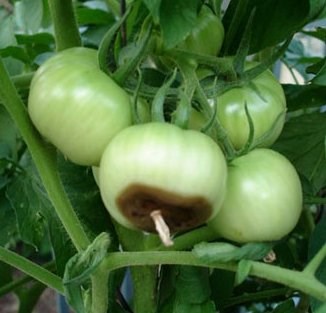
Blossom end rot in tomato. It starts as a tan water soaked legion on the blossom end of the fruit and progresses to a large, black leathery spot.
Source: www.harvesttohome.com
During the winter, vegetables and herbs require less water than in summer because of a reduced transpiration rate. However, nutrient application rates remain the same year-round as nutrient needs of a crop do not change much from summer to winter. This is mostly because the greenhouse helps a grower to be less dependent on the outdoor environment (temperature, light, day length, precipitation, etc.) as it can provide an optimum growing environment year-round. Since plants use less water in the winter and nutritional needs do not change, they are fed at slightly higher rates than in the summer so they do not run out of nutrients between water applications.
Fertilizer levels are typically measured as EC (dS/m). For example, the EC of the fertilizer supplied to tomatoes during the peak of harvest in the spring is 2.5 dS/m (with a recommended leaching fraction of 10-30% per watering). It is also recommended that the leachate should have an EC that is one unit higher than the input EC of the fertilizer solution. It is better to test the EC and pH of the input and output every day and adjust as required. In addition, these tests can verify the proper operation of the injectors or the actual nutrient concentration.
Finally, it is recommended to send tissue samples to the laboratory every other week and adjust the fertility program, if required. Do not change the nutrient content drastically! It is better to change it gradually. Ideally, plants will respond to these changes in about two weeks. Send more samples to the laboratory to see if corrections have been made or if additional adjustments are required.
For more information, contact your Premier Tech Grower Services Representative:
 |
 |
 |
 |
|---|---|---|---|
|
Ed Bloodnick |
Nathan Wallace-Springer |
Lance Lawson |
Victor Brantly |
 |
 |
 |
|
|
Troy Buechel |
Susan Parent |
Jose Chen Lopez |
PRO-MIX® is a registered trademark of PREMIER HORTICULTURE Ltd.
Related Articles
-
Greenhouse Herb and Vegetable Production – Part 1/4 - Location
In this four-part series, we will look at the ideal location, structures and environment needed to grow vegetables and herbs in a greenhouse production facility. In this first part, we will discuss the first step: finding the ideal location to start a greenhouse production facility.
-
Greenhouse Herb and Vegetable Production – Part 2/4 – Greenhouse Structure
In this second part of our four-part series on growing vegetables and herbs in the greenhouse, we will focus on the greenhouse structures needed to produce quality crops.
-
Greenhouse Herb and Vegetable Production – Part 3/4 – Greenhouse Environment
In this third part of our series on growing greenhouse vegetables and herbs we will focus on the ideal greenhouse environment.
-
Greenhouse Herb and Vegetable Production – Part 4/4 – Growing Media
In this fourth and last part of our series on growing greenhouse vegetables and herbs, we will address the appropriate growing medium to use.
-
How to Calibrate Fertilizer Injectors
Plants require essential elements to maximize their genetic potential. These elements are supplied by air, water, substrates and fertilizers; for water soluble fertilizers, it is important to make sure your fertilizer injector is working properly and that it is calibrated for accuracy.
-
Influence of Fertilizer on Growing Media
Horticulture Specialist from our Grower Services team, JoAnn Peery, explains the 2 main factors to determine the fertilizer you should use depending on your water quality and the kind of crops you are growing.

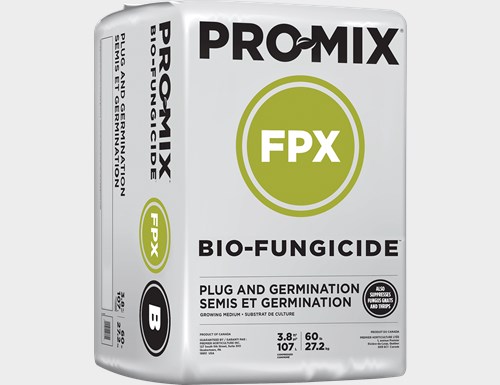
 Where to find our products
Where to find our products
